Energy Storage
Schaltbau North America
Wind
Ole Binderup
Solar
Sun Ballast

This signature marks a major milestone in KEOL’s growth and the beginning of a strategic alliance between two innovative and complementary French companies. Together, KEOL and SOCOMORE will combine their expertise to accelerate growth in UV adhesives, structural bonding technologies, and high-precision dispensing systems. KEOL’s expertise and agility with Socomore’s strength will help offer bonding solutions perfectly tailored to customers needs.
This partnership will strengthen KEOL’s industrial capabilities, boost R&D projects, and expand its international reach through SOCOMORE’s global network.
Socomore will draw on KEOL's 12 years of experience in the adhesives market to support growth in the global aerospace and defense market, thereby expanding the portfolio of solutions for its customers. This range complements the surface preparation solutions prior to bonding, painting, or sealing already available in the SOCOMORE portfolio.
“This alliance is built on shared values — a passion for innovation, technical excellence, and the ambition to shape a more efficient and responsible industry.” - Christophe Brunel, President of KEOL
“I am delighted with this collaboration with KEOL, which gives us expertise in the adhesives market and thus supports our development strategy by bringing new solutions to our customers. This new venture will enable us to combine our resources and ensure the success of this collaboration.” - José Coelho, CEO of SOCOMORE
KEOL extends its thanks to José Coelho, Frédéric Lescure, and Nathalie Vigouroux for their trust and commitment to this new chapter.
SOCOMORE | https://www.socomore.com/
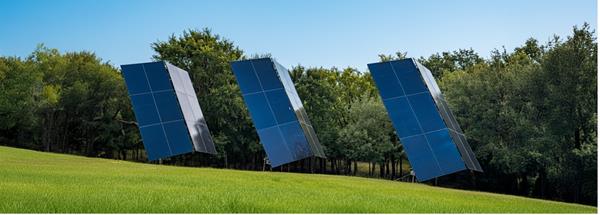
Janta Power, a leading developer of innovative three-dimensional solar tower systems, has closed a $5.5 million seed round led by MaC Venture Capital, with participation from Collab Capital, to accelerate the commercialization of its patented, high-density 3D photovoltaic tower technology. This investment will support product scale-up and deployments across data centers, EV charging hubs, telecom towers, universities, and a range of industrial facilities.
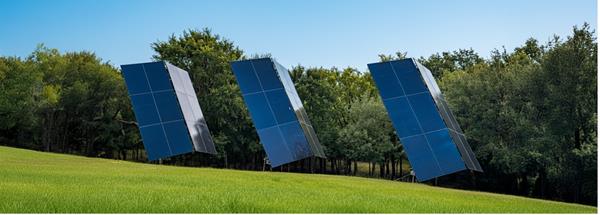
Janta’s vertical solar towers are engineered to generate ~50% more energy than traditional flat-panel systems while using one-third of the land area, overcoming energy-density and siting constraints that limit conventional solar.
Pilot programs are underway with major global airports, including Munich International Airport, Aena (operator of over 70 airports worldwide), and Dallas–Fort Worth International Airport (DFW), as part of the Airports for Innovation (A4I) initiative.
Janta’s patented tower geometry maximizes energy generation density, producing up to three times more power output per land area compared to traditional solar technology. Each tower’s stacked vertical design captures both low-angle morning and evening light, producing a dual-peak power curve that better aligns with real energy demand.
Janta’s technology can reach capacity factors of up to ~32% compared to ~22% for flat panels, thanks to active shading optimization and control software. Each structure is engineered to withstand winds of at least 110 miles per hour and as much as 170 mph, and feature steel construction and modular helical or pier foundations that eliminate the need for extensive grading.
Unlike traditional solar technology that concentrates output near midday, Janta’s 3D configuration smooths energy delivery throughout the day—reducing ramp stress on grids and lowering reliance on peaker plants. This unique generation profile complements conventional solar and enhances overall grid stability.
Currently, Janta Power’s solar solution can achieve a Levelized Cost of Energy (LCOE) as low as $0.05/kWh, compared to the global average of approximately $0.15/kWh. As the company continues to scale and optimize its manufacturing and deployment processes, the goal is to further reduce the LCOE in the next few years.
Janta Power | jantaus.com
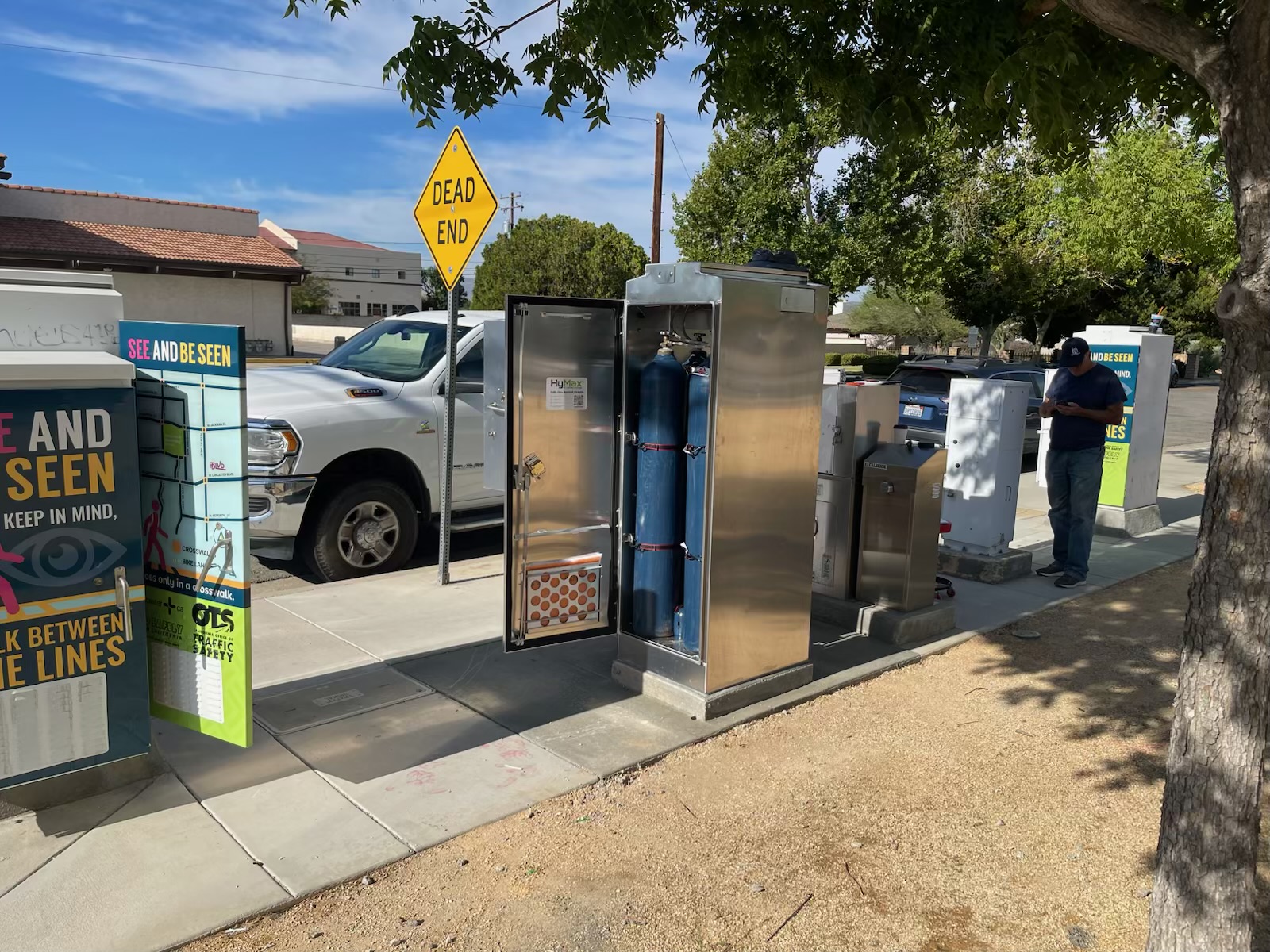
The City of Lancaster, First Public Hydrogen Authority (FPH2), and Western Systems have partnered to deploy hydrogen-powered backup traffic signals, a major infrastructure upgrade that enhances traffic safety, ensures reliable operations during power outages, and supports the City's decarbonization initiatives. This marks the latest milestone in the City and FPH2's work to help cities integrate hydrogen into essential public services.
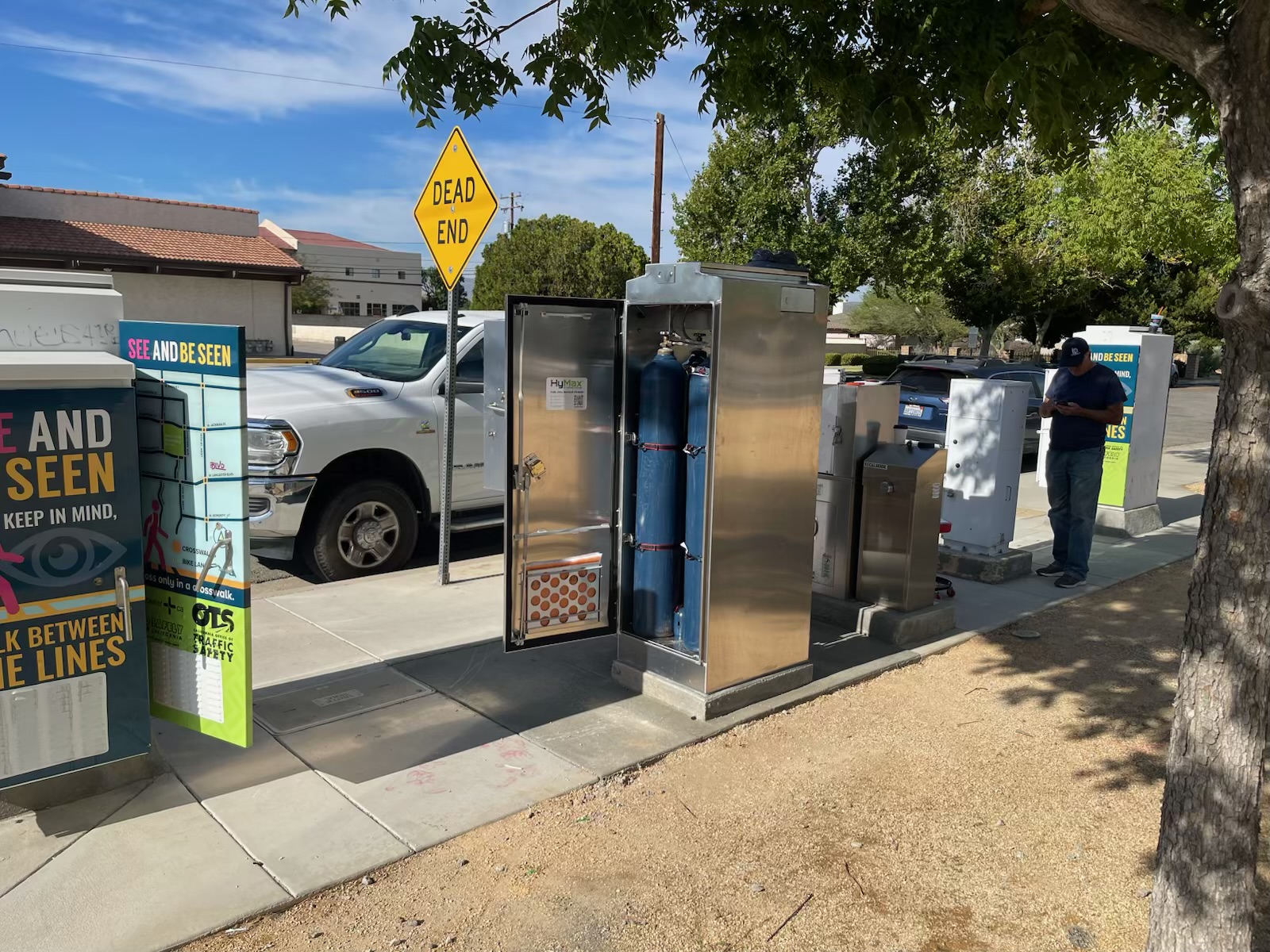
The new backup systems, powered by HyMax fuel cells, keep traffic intersections functioning during blackouts and disruptions. Conditions that are becoming increasingly common due to grid strain, wildfires, and extreme weather.
"Lancaster has always embraced innovation when it comes to public safety and infrastructure," said Lancaster Mayor and FPH2 Chairman R. Rex Parris. "Projects such as these reflect our commitment to practical, forward-looking investments that make life better for our residents. It is an example of how hydrogen can support vital infrastructure where it's needed most. We're proud to partner to launch this in Lancaster and provide a practical solution that keeps traffic flowing and communities protected."
HyMax fuel cells, manufactured by Western Systems, are designed for long runtime and minimal maintenance. With no internal moving parts and a compact footprint, the systems provide a dependable alternative to diesel generators for traffic management and other critical services.
The backup signal installation is part of a broader strategy to deploy hydrogen across Lancaster's municipal systems, including transportation, emergency services, and utility operations. Through collaboration with FPH2, the city is advancing a hydrogen model that supports reliability, safety, and operational continuity.
FPH2 is working with cities to integrate hydrogen in ways that deliver tangible value. This project demonstrates the role hydrogen can play in supporting core municipal functions, from traffic safety to emergency response, while delivering real value to communities. Formed by the City of Lancaster and the City of Industry as a public Joint Powers Authority, FPH2 connects hydrogen producers with reliable off-takers through a seamless, transparent process.
Through its Joint Powers Authority structure, FPH2 enables public agencies to access shared tools for procurement, technical planning, and infrastructure deployment at no cost to participants. The organization continues to invite cities, transit providers, and local utilities to explore how hydrogen can strengthen their operations.
City of Lancaster | www.cityoflancasterca.org
First Public Hydrogen | www.firstpublich2.com
HyMax | hymax-inc.com
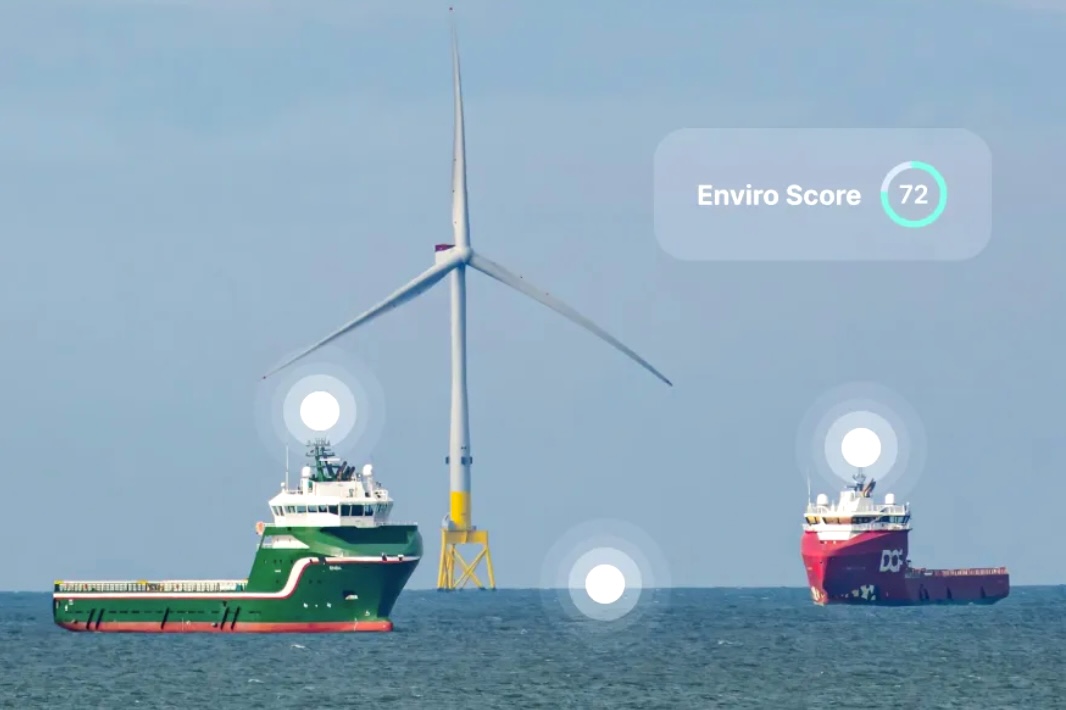
Ocean Winds, the international offshore wind energy company created by EDP Renewables and ENGIE, has once again renewed its Market Intelligence contract with Spinergie to sharpen its project planning and execution. With a global portfolio of projects across eight countries, Ocean Winds needs precise intelligence to navigate the challenges facing the offshore wind sector. Rising costs, volatile supply chains, and looming vessel bottlenecks, mean that securing capacity requires advanced vessel intelligence.
Spinergie’s Market Intelligence platform addresses this challenge by providing real-time and historical insight into global installation and maintenance campaigns. With detailed fleet schedules, specs, and project intelligence, Ocean Winds can identify and secure the right construction vessels well in advance.
The platform equips Ocean Winds to make the best decisions for their 17 secured offshore wind projects. By benchmarking operational metrics such as days per turbine and days per foundation, they have a clear view of performance relative to industry standards and can plan accordingly. With a stronger understanding of how previous, similar, projects have been managed, they can use lessons from industry learning curves.
Ocean Winds uses Spinergie’s open data architecture to combine Market Intelligence intel with its own internal intel. This helps them undertake more personalized, detailed analysis specific to their own projects. Through this integration, Ocean Winds has gained a centralized platform that keeps their internal teams aligned.
“Spinergie enables us to benchmark our project plans against the broader market. We can more readily identify vessel opportunities and stay a step ahead of the tightening supply chain with reliable availability and performance intelligence.
“We value Spinergie’s ongoing support and expertise and look forward to continuing this trusted collaboration,” said Oscar Diaz, Chief EPCI Officer at Ocean Winds.
“There is no room for guesswork in today's offshore wind market. Developers need accurate vessel availability and performance benchmarking that they can rely on to make impactful decisions. “
“Ocean Winds is proving that combining their own expertise and operational data with intuitive Market Intelligence is the only way to build projects that can withstand supply chain volatility and deliver without delays,” said Fabien Scemama, Head of Client Success at Spinergie.
Spinergie | www.spinergie.com
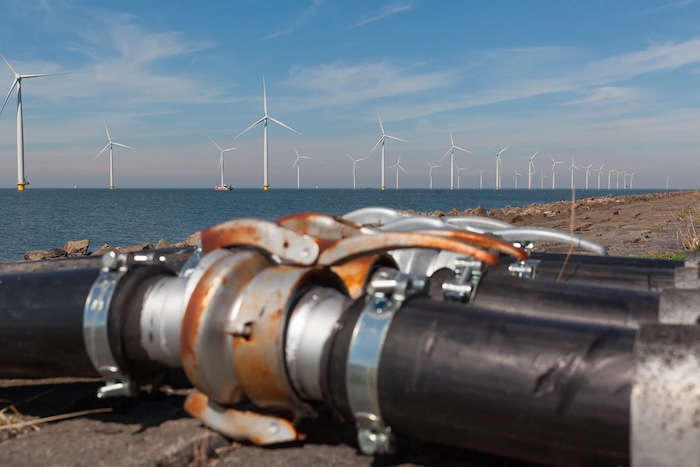
Indeximate, the leading provider of fibre sensing-based cable health monitoring to the offshore wind energy industry, announced that it has demonstrated its cable health monitoring to the offshore wind farm operator RWE. Following their success in RWE’s 2023 innovation competition, over winter 2024-25, Indeximate’s proprietary Scattersphere technology provided continuous health monitoring tracking and analysis of two strings at Arkona offshore wind farm in the Baltic Sea, covering 13 turbines.
.jpeg)
Indeximate’s technology leverages existing optical fibres that commonly exist in subsea power cables to collect and automatically interpret distributed acoustic sensing (DAS) data. The monitoring and analysis included key areas of the cable protection system (CPS) between touchdown and aperture, as well as inside the monopile from aperture to hang off where installation of sensors for monitoring has long been a legacy issue for the sector.
Over the six-month period, data was collected on the cables as they were subject to typical winter storm conditions, the effects of gravity and 7-metre-high waves. Dynamic strain measurements from DAS were taken 2,000 times per second at 10m intervals along the cables. Indeximate compressed the raw data in real time using its proprietary Indeximation technology, uploaded to their cloud portal, the Scattersphere, where automated analytics extracted several long-term risk profiles for the cable including abrasion, strain, fatigue integrity and vibration.
Automated analysis of the data identified signatures related to cable movement, abrasion and vibration, as well as fatigue and damage. Analysed alongside co-registered wave and wind data, the long-term data record allows Indeximate to observe how the cables behaved in certain conditions, such as directional weather and specific wave heights and identify where issues may emerge. These insights have the potential to identify points of failure in advance, providing time for O&M teams to develop approaches to mitigate issues and avoid disruption and downtime, that can cost operators millions.
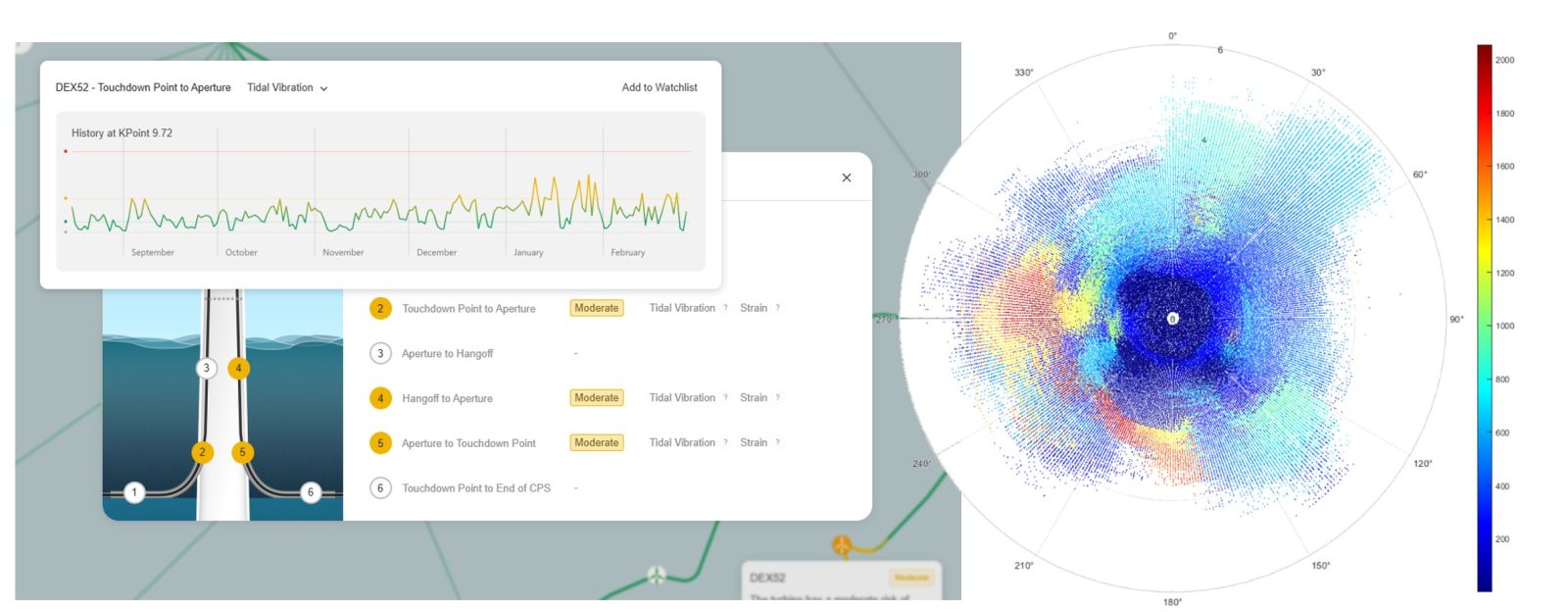
Commenting on the ongoing monitoring work, Dr Chris Minto, Director, Indeximate said: “Our proprietary data compression and analysis technologies are unlocking vital insight into cable health that previously was unavailable to operators and allows us to establish health and risk profiles for all subsea power cables, helping operators avoid repair costs. We are hugely proud of our work with RWE to provide a clearer view of the condition of their cables at the Arkona wind farm in the hard to inspect regions inside the monopile and through the CPS, showing how weather variations effect cable health.”
Anika Borm-Schmelcher, Head of Innovation & Industrialisation at RWE Offshore Wind commented: “We have been impressed by the work Indeximate delivered to monitor our cables at our Arkona offshore wind farm. Since participating in RWE’s Innovation Competition in 2023, Indeximate and their data processing and monitoring technologies have further developed and now demonstrated their potential to deliver insight on our assets and to exploit the cloud-based resource for multiple approaches beyond cable health. The solution might finally enable RWE to better forecast the health of seabed power cables and, further in the future, to monitor the working environment of our offshore wind farms.”
Indeximate uses industry-leading proprietary data compression technology to enable the analysis of petabytes of long-term DAS data collected using optical fibres that commonly exist as part of subsea power cables, in Indeximate’s cable health monitoring Scattersphere technology.
Historical pattern and trend analysis allows the creation of years-long risk profiles, which enable cable operators to continuously assess risks to assets, understand remaining life and benefit from early warning and detection of cable flaws. New fibre sensing and data compression approaches are enabling the offshore wind industry to reevaluate cable monitoring and the extent of insights that can be gathered on cable health, environment and the water column.
Indeximate | https://indeximate.com/
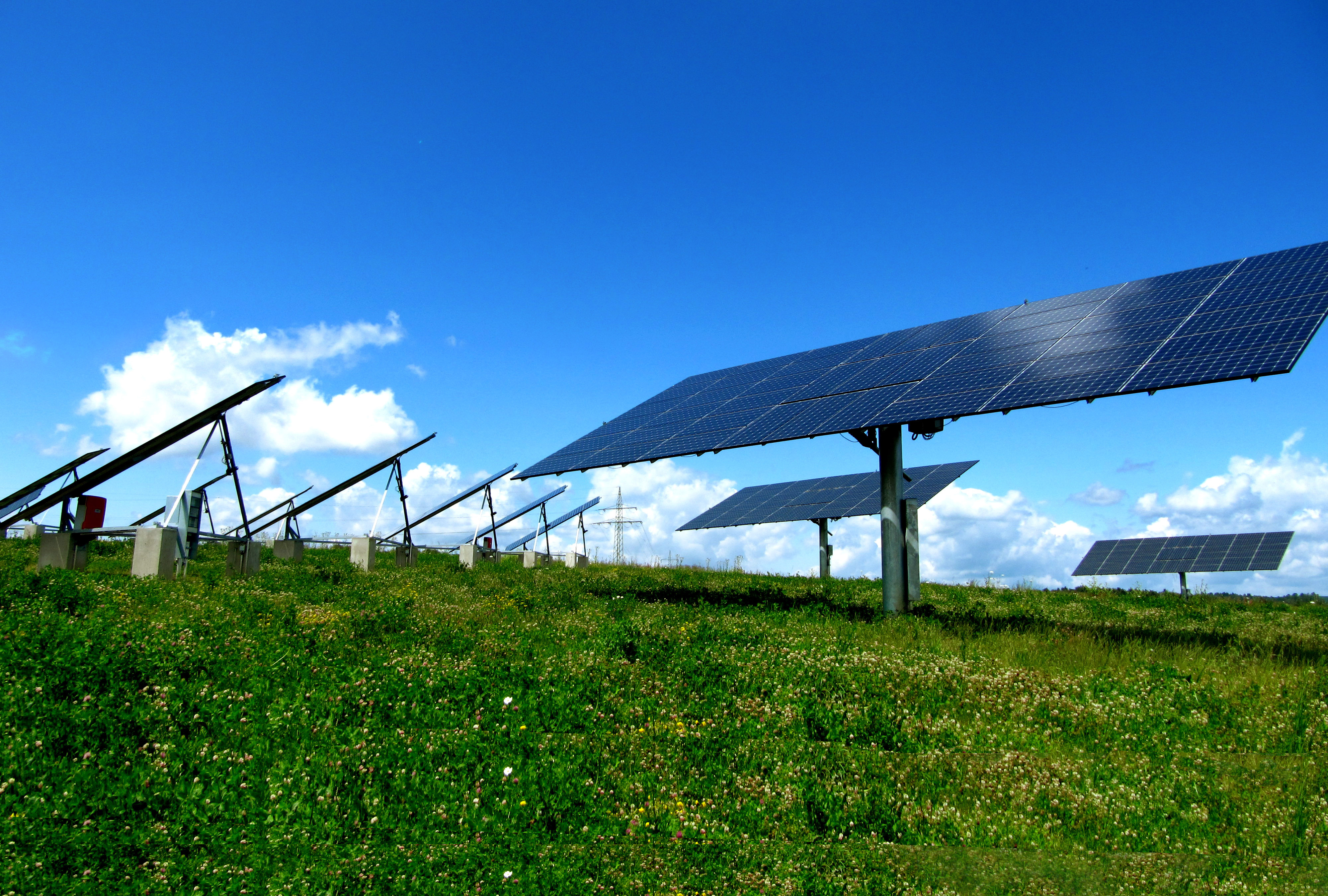
Woodchuck, the AI-powered climate-tech startup redefining how construction and manufacturing industries handle wood waste, announces that Barton Malow, a 101-year-old construction enterprise committed to delivering innovative, trust-based solutions, has partnered with Woodchuck to divert wood waste from the Hart Solar Farm project away from landfills and into clean energy production. Together, the companies are not only diverting thousands of tons of wood waste from landfills, but also saving valuable time and resources by streamlining the waste hauling process. The diverted material is processed and delivered to Genesee Power Station, a NorthStar Clean Energy project, where it is repurposed as biomass to generate renewable power.
The collaboration addresses one of the most significant challenges in renewable energy construction: waste management. Traditionally, pallets, cable spools, and miscellaneous wood supports would have been sent to landfills. By working with Woodchuck, Barton Malow is ensuring that these materials find a higher purpose in clean energy production.

“Partnering with Woodchuck gives our project teams a real opportunity to put waste diversion into practice on a large scale,” said Jill Katic, Senior Sustainability Director at Barton Malow. “Not only does this help us reduce environmental impact, but it also provides quantifiable reporting we can use in our greenhouse gas inventories and annual sustainability reports. That level of accountability helps us deliver greater value to our clients.”
For Woodchuck, the partnership reflects its mission to eliminate construction waste from landfills and create renewable energy streams.
“Our work with Barton Malow at the Hart Solar Farm is proof that waste can be an asset,” said Todd Thomas, CEO of Woodchuck. “By coordinating hauling, shredding, and processing on-site, we make the logistics easier for builders while ensuring that every pallet and piece of wood debris is diverted into clean energy production instead of buried in a landfill.”
NorthStar Clean Energy, which utilizes the repurposed biomass, sees the project as a demonstration of how collaboration across industries can drive measurable sustainability outcomes.
“Turning wood waste from a solar construction site into clean, renewable energy is exactly the kind of circular solution our energy future demands,” said Brian Hartmann, President of NorthStar Clean Energy. “Working with Barton Malow and Woodchuck shows how innovative partnerships can scale sustainable practices while delivering reliable energy to Michigan communities.”
The Hart Solar Farm project, which spans more than four square miles, has already diverted nearly 500 tons of wood waste that was converted into 38M BTU, enough energy to power 16 Detroit homes for a month (or equal to 824 tons of CO2e, the equivalent of taking 180 cars off the road for a year). For Barton Malow, the effort underscores its commitment to helping clients meet sustainability goals while advancing renewable energy infrastructure.
Not only does this project support Woodchuck’s mission, but it also proves that the company’s model can be scaled dramatically to support large construction projects. Any construction company struggling to manage waste due to cost or lack of manpower can look to Woodchuck for a proven, scalable solution.
Woodchuck | https://woodchuck.ai/
NorthStar Clean Energy | https://northstarcleanenergy.com/

Atmos Financial, PBC and Clean Energy Federal Credit Union announced the formation of Atmos Clean Energy Solutions, a newly registered Credit Union Service Organization (CUSO) dedicated to making clean energy lending easy and accessible for every credit union across the United States.
Atmos Clean Energy Solutions provides credit unions with a turnkey, customizable platform to launch and scale clean energy lending programs that are efficient, cost-effective, and impactful. By combining Atmos Financial's climate-fintech expertise with Clean Energy CU's proven track record in mission-driven lending, the CUSO enables institutions of any size to enter the rapidly growing clean energy sector with confidence.
Mission & Vision
"Adopting a plug-and-play model for solar lending would have been a game-changer when we launched," said Terri Mickelsen, CEO of Clean Energy Credit Union. "After using the Atmos solution for over six months, I've been impressed by its simplicity and the support behind it. It's incredibly accessible and easy for our small team to manage. We spent an extraordinary amount of time and resources building our solution from scratch; being able to offer credit unions a ready-made path, backed by seasoned industry veterans, isn't just convenient, it's invaluable."
Ravi Mikkelsen, CEO of Atmos Financial, added: "Credit unions have always been at the forefront of community-based finance, and now they have a once-in-a-generation opportunity to lead in the clean energy transition. Atmos Clean Energy Solutions was designed to eliminate barriers, accelerate program launches, and empower credit unions of all sizes to offer their members affordable, resilient, and sustainable energy solutions. Together, we can transform how millions of Americans power their lives — and how credit unions grow their memberships."
The Opportunity
Distributed clean energy lending is one of the fastest-growing segments of consumer finance. With historically strong performance, cash-flow-neutral loan structures, and powerful member acquisition potential, clean energy lending positions credit unions to diversify portfolios while deepening community ties. Yet, launching a program from scratch has traditionally required significant time, capital, and expertise.
Atmos Clean Energy Solutions bridges this gap by offering:
For credit unions, the impact is clear: 3 months from 1st-meeting-to-launch (3 - 9 months saved), dramatically reduced program costs (up to 92% savings versus DIY), and the ability to own the member relationship in one of the most dynamic financial markets of our time
Atmos Clean Energy Solutions | www.atmoscuso.com
Solar Oct 10, 2025
Solar is safe when it’s maintained — and risky when basics slip. Across sites, the pattern behind many PV fires is consistent: soiling and shading create hot spots; loose or corroded DC joints run hot; wildlife and litter add fuel; and moisture i....



Solar is safe when it’s maintained — and risky when basics slip. Across sites, the pattern behind many PV fires is consistent: soiling and shading create hot spots; loose or corroded DC joints run hot; wildlife and litter add fuel; and moisture i....
As utility-scale hybrid solar and battery energy storage projects become standard across North America, operators are facing increasing complexity. These systems are no longer passive generators, but dynamic assets that must respond in real time to g....
It didn’t start with a robot. It started with a problem. Clean energy is one of the hottest commodities today, and the world is rushing to meet this increasing demand. However, the typical financial barrier isn’t a problem for the industry; it....
Wind power has been a highly successful ....
As wind turbines keep growing taller and....
As energy needs grow more complex and grid instability becomes a regular concern, mobile microgrids are gaining attention as a flexible, lower-emission energy solution. Their emergence is timely. From wildfire-related outages in the West to hurricane....
A next generation of Virtual Power Plants has emerged in 2025, embodying trends which will require more efficient integration with utility grids. These trends span a wide range: VPPs that integrate EV charging and other new resources; building manage....
The confluence of several energy challenges has presented itself within the North American market. Rising electricity demands, grid reliability concerns, affordability and bottlenecks have reached an inflection point. Microgrids are emerging as a sol....
After months of debate in Congress, the One Big Beautiful Bill Act (OBBBA) was finally signed into law. With the goal of restructuring and simplifying federal incentive programs while reducing long-term costs, the OBBBA comes with several updates and....
Helium, once known primarily for its niche industrial uses, has emerged as a strategic political asset amid rising geopolitical tensions and trade uncertainties. Its critical role in next-generation technologies such as semiconductors, space explorat....
The need for reliable, high-quality electricity has never been greater now the grid is highly dependent on getting its supply from multiple sources. Power grid quality monitoring increasingly plays a significant role in ensuring that electricity arri....